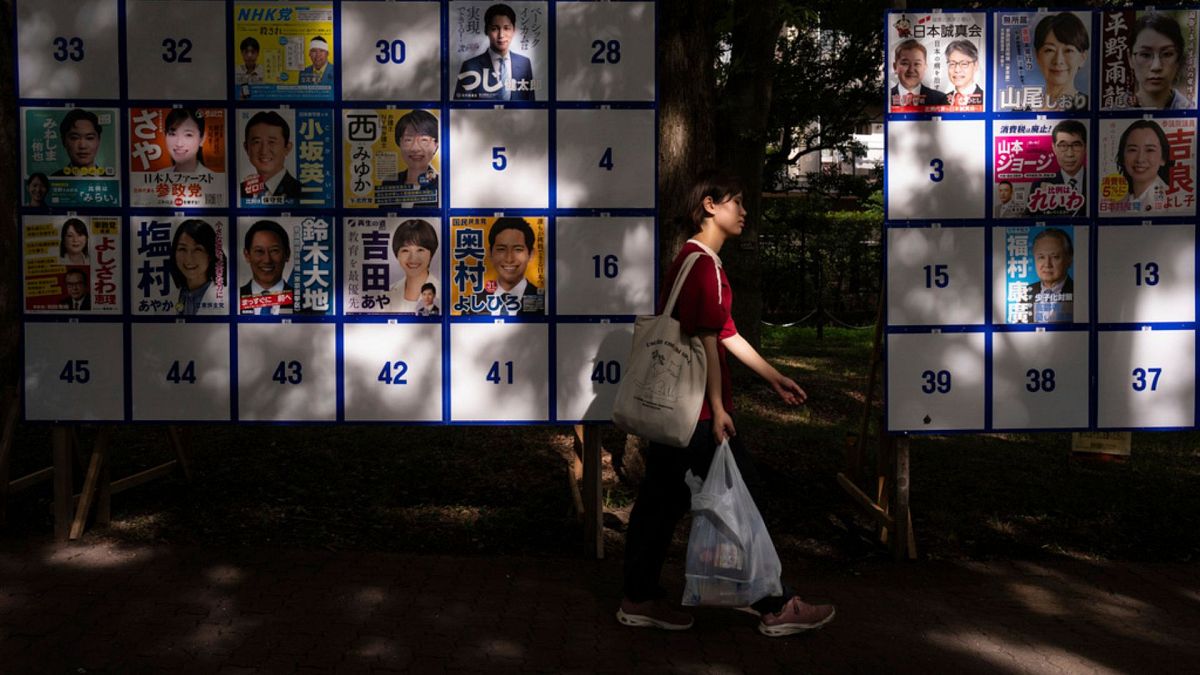Sanseito, a far-right nationalist group founded just four years ago, walked away from Sunday’s upper house election with 14 seats, a surprising leap from the single seat it held since 2022.
It became the fourth-largest opposition force in the 248-seat chamber, behind the Constitutional Democratic Party of Japan (CDP), the Democratic Party for the People (DPP) and Nippon Ishin no Kai.
The ruling Liberal Democratic Party suffered a major setback in October’s lower house election, as loyal voters voiced anger over corruption scandals and rising costs.
Prime Minister Shigeru Ishiba is struggling to restore trust, and his minority government has had to make compromises with the opposition to pass laws.
Alongside food shortages and soaring rice prices, Ishiba also faces pressure from US President Donald Trump’s tariff demands. Angry voters are now turning to new, radical parties pushing an anti-immigration and anti-diversity agenda.
While Sanseito fell short of its goal of securing 20 seats — the threshold required to submit budget proposals — it now holds enough seats to introduce nonspending bills in the Upper House, which only need 10 votes.
Launched in 2020 amid the COVID-19 pandemic, Sanseito first gained traction on YouTube with a flurry of anti-vaccine and anti-mask videos. The party’s YouTube channel has over 460,000 subscribers.
Its message soon shifted to a broader “Japanese First” platform, warning of the impact of tourism and an increase in foreigners in the country.
The number of foreign residents in Japan hit a record 3.8 million in 2024, with tourist arrivals reaching nearly 37 million, according to the National Tourism Organisation.
These figures, though still small compared to the overall population, have become a focal point of voter unease.
As reported by Japan Times, party leader Sohei Kamiya has consistently denied that the party’s platform is xenophobic.
“The notion that people who want to discriminate and kick foreigners out (of Japan) are flocking to Sanseito is, I think, a little wrong. We aren’t that kind of party,” he said, noting that the slogan is about “standing up against globalism and protecting the lives of Japanese citizens.”
However, Sanseito’s seeks to limit the number of foreign workers and visitors, capping foreign residents at 5% of the population in any municipality, tightening naturalisation and residency rules and banning naturalised citizens from holding public office.
While far-right parties have historically struggled to gain lasting traction in Japan’s political system, Sunday’s results suggest a potential shift.
According to the party, around 1,400 people attended a Saturday morning rally in Saitama, with an estimated 20,000 turning out for the final event in Tokyo that evening.
Nonetheless, Sanseito’s rise has not come without pushback. Protesters have shadowed party rallies, holding placards that read “There is no first or second to humankind” and “Japanese First is discrimination.”
‘Japan will become a colony’
A former member of the LDP, Kamiya lost his 2012 election bid despite then-Prime Minister Shinzo Abe’s support. He later founded Sanseito and was elected to a seat in the upper house in 2022.
A former Self-Defence Force reservist, he has been open about drawing inspiration from Trump.
“Under globalism, multinational companies have changed Japan’s policies for their own purposes,” Kamiya declared at a recent rally. “If we fail to resist this foreign pressure, Japan will become a colony.”
He also sparked backlash for opposing gender equality policies and suggesting women should focus on motherhood, media outlets reported.
When asked about his appeal to male voters, he claimed it might be because he is “hot-blooded,” adding, “that resonates more with men.”

